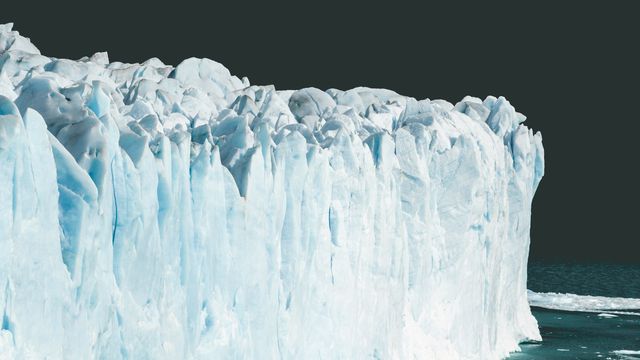
Researchers at the University of California, Riverside, have uncovered a significant missing element in the understanding of Earth’s carbon recycling process. This discovery suggests that global warming could potentially overcorrect, leading to a new ice age. The study, published in the journal Science, challenges the traditional view that Earth’s climate is regulated by a slow but steady process of rock weathering.
The established theory posits that rain absorbs carbon dioxide from the atmosphere and interacts with exposed rocks, particularly silicate rocks like granite. This process gradually dissolves the rocks, and the captured CO₂ is transported to the ocean. There, it combines with dissolved calcium to form seashells and limestone reefs, effectively sequestering carbon on the sea floor for millions of years. “As the planet gets hotter, rocks weather faster and take up more CO₂, cooling the planet back down again,” explained Andy Ridgwell, a geologist at UCR and co-author of the study.
Challenging the Traditional Climate Regulation Model
However, geological evidence indicates that ancient ice ages were so severe that the entire planet was enveloped in snow and ice. This suggests that the gentle regulation of Earth’s temperature by rock weathering is not the whole story. The missing link, according to the researchers, involves the burial of carbon in the ocean.
As atmospheric CO₂ levels rise and the planet warms, more nutrients like phosphorus are washed into the sea, fueling the growth of plankton. These organisms absorb carbon dioxide during photosynthesis and, upon dying, sink to the ocean floor, taking the carbon with them. In a warmer world, increased algal activity leads to oxygen depletion in the oceans, causing phosphorus to be recycled rather than buried. This creates a feedback loop where more nutrients lead to more plankton, which further depletes oxygen and recycles nutrients.
“This system doesn’t gently stabilize the climate, but instead overshoots, cooling Earth far below its starting temperature,” the study notes.
The Ice Age Trigger
In the study’s computer model, this feedback loop could trigger an ice age. Ridgwell likens this to a thermostat that overcompensates to cool a house. “In summer, you set your thermostat around 78 degrees F. As the air temperature climbs outside during the day, the air conditioning removes the excess heat inside until the room temperature comes down to 78 and then it stops,” he said. However, Earth’s thermostat, according to Ridgwell, might not be in the same room as the air conditioning unit, leading to uneven performance.
Historically, lower atmospheric oxygen levels made Earth’s thermostat more erratic, resulting in extreme ancient ice ages. Today, as humans continue to add CO₂ to the atmosphere, the planet will warm in the short term. The researchers’ model predicts a cooling overshoot, though it will likely be milder due to higher current oxygen levels, which dampen the nutrient feedback loop.
“Like placing the thermostat closer to the AC unit,” Ridgwell added. Nevertheless, it could be enough to precipitate the next ice age sooner than expected.
Implications and Future Considerations
Ridgwell raises an important question: “At the end of the day, does it matter much if the start of the next ice age is 50, 100, or 200 thousand years into the future?” He emphasizes the necessity of focusing on limiting ongoing warming. The eventual cooling of Earth, regardless of how erratic, will not occur rapidly enough to mitigate current climate challenges.
The study, titled “Instability in the Geological Regulation of Earth’s Climate,” authored by Hülse and Ridgwell, offers a fresh perspective on Earth’s climate dynamics. It underscores the complexity of natural systems and the potential for unexpected outcomes as human activities continue to alter atmospheric conditions.
As the scientific community continues to explore these findings, the broader implications for climate policy and future research are significant. Understanding the intricate balance of Earth’s climate systems is crucial for developing effective strategies to address the pressing issue of global warming.





